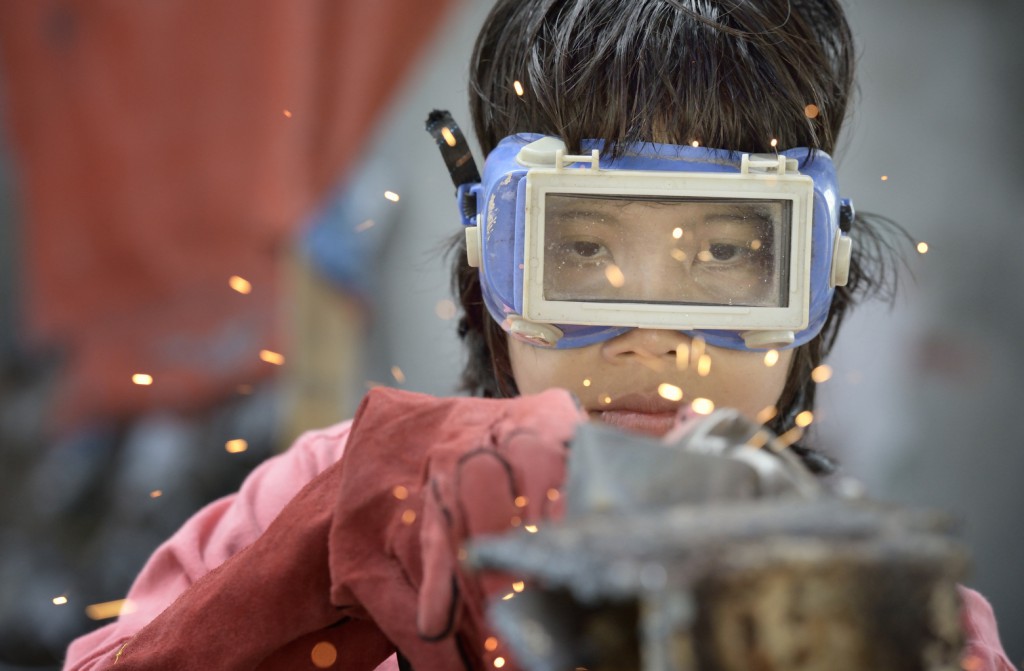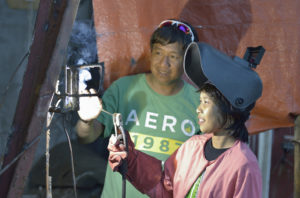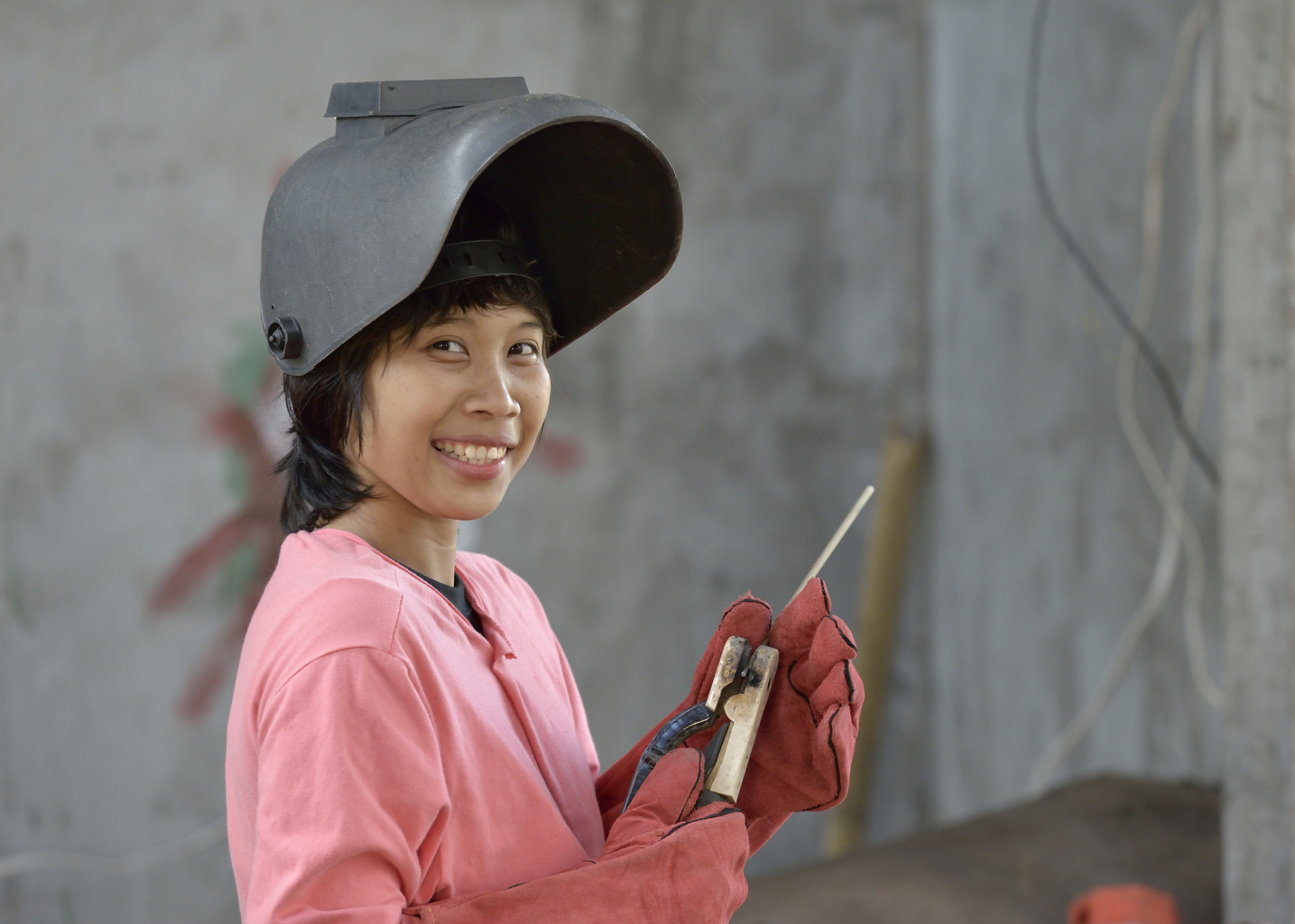
TOLOSA, Philippines (CNS) — On the eve of the one-year anniversary of the most powerful tropical cyclone to slam the central Philippines, signs of hope are emerging among some of the people who lost their only means of earning a living.
For Jeddah Palo, 24, such hope rests in becoming a welder, a skill in high demand in the island nation and elsewhere.
[quote_box_right]
Archived coverage of Typhoon Haiyan
[/quote_box_right]
Before Typhoon Haiyan struck, Palo helped her father harvest coconuts for oil, practicing a trade that had been in her family for generations. But the storm’s 195-mph winds snapped tens of millions of coconut trees the morning of Nov. 8, 2013, leaving at least 1 million coconut farmers, most living a subsistence life, with no income.
Palo’s family was one of those hurt by the storm, known locally as Yolanda.
“We sold coconuts for our daily living,” said Palo, who lives in Tanauan one of the towns that suffered a significant number of the 7,300 dead or missing. “But now that’s gone, totally washed-out because of Yolanda.”
To make up for the loss, Palo enrolled in a government technical skills training program to become a welder. She was the only woman in the course, which met at a Catholic chapel in Tolosa, a small community south of Tacloban, the city which bore the brunt of the casualties from the storm.
“I couldn’t go back after the first day because I had to climb there,” she told Catholic News Service, pointing at the frame of the chapel roof. She was afraid of heights, she said.

To make things worse, she said, the men in her class questioned whether she, a woman, of slight build and not much by the way of height, could handle welding.
But a mentor persuaded her to return so she could learn a skill that is in demand.
Soon after, Palo said her classmates and the instructor began to encourage her and help her refine her welding techniques.
Catholic Relief Services covers some of the costs of the training program specifically for typhoon survivors. Ana Ferreira, agriculture and livelihoods program manager for CRS, said she was impressed by how committed the typhoon victims were to being employed even if it meant doing something drastically different.
[quote_box_right]
CRS impact after Typhoon Haiyan
[/quote_box_right]
“With coconut farming, it’s going to be six to eight years before they can have a new harvest and people are very aware of this so they’re very eager to find alternative livelihoods,” Ferreira told CNS.
Dwight Lerios, a neighborhood official and chapel volunteer, called the program “a big help, because once they are given a certificate they can go abroad.”
But he also lamented the fact that the program was limited to coconut farmers who lost their livelihood to the typhoon, saying other residents wanted the training too.
In late October, Palo passed her test for certification and decided to seek work overseas so she could send funds home to her family. She said that for the time being she hoped someone would help open doors for her and her classmates, even to the point of starting a welding business from home.
But she didn’t have to wait for long. As Palo described her plight, a CRS staff member said she had arranged a meeting for Palo with a woman whose transportation business was in need of a welder.
“Yes, ma’am! … I’m willing,” Palo said with a laugh.
— By Simone Orendain, Catholic News Service.







